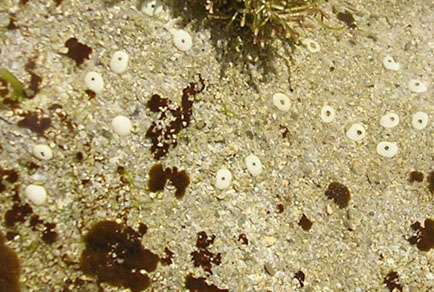Abstract
The black nerite Nerita melanotragus (previously known as N. atramentosa) occurs along the rocky intertidal shores of New Zealand and southeastern Australia. Although commonly used in ecological studies, recent observations suggest that the spe-cies may not be strictly planktonic as previously recorded. The current study investigates whether only planktonic larvae emerge from N. melanotragus egg capsules in the field by analyzing encapsulation period, developmental stage, temperature and salinity through the digital monitoring of 386 individual egg capsules over 65 days. The persistence of egg capsules in rock pools was highly variable (1–54 days). Encapsulation period was strongly related to developmental stage (Adjusted R2 = 0.8293, p < 0.0001), and competent larvae and post-metamorphic juveniles were recorded from some capsules after an encap-sulation period of 35 or more days. Encapsulation period was significantly and parabolically related to both temperature and salinity, with encapsulation period decreasing during extreme conditions. Results indicate that egg capsules can persist for much longer than would be expected with a strict planktonic developmental mode, thereby challenging the status of N. melan-otragus as a consistent planktonic developer. The potential of this species for poecilogony or hatching plasticity is discussed in light of recent studies examining the role of larval dispersal and biogeographic barriers in structuring rocky intertidal commu-nities.

